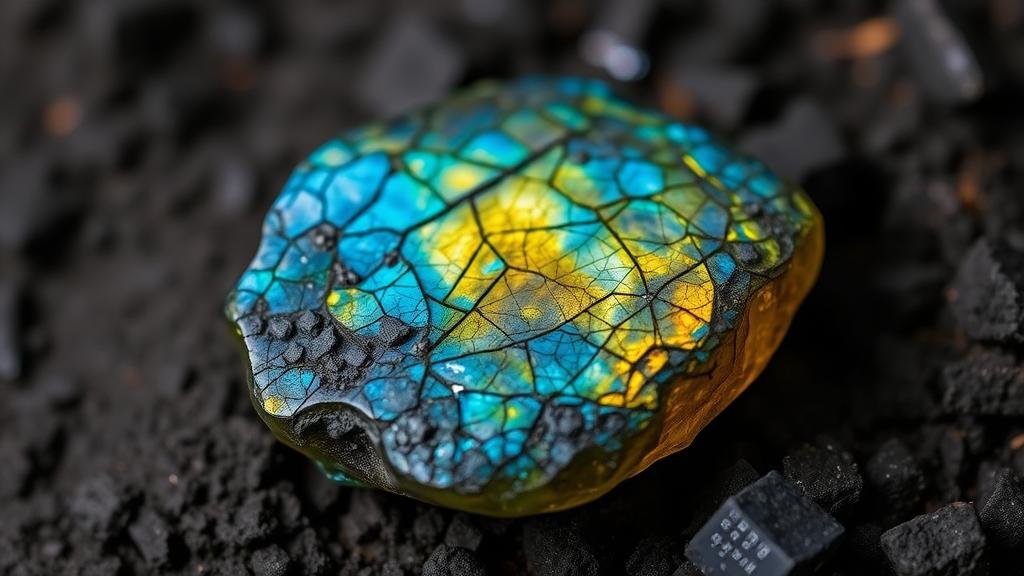The Glow of Labradorite: Unearthing Iridescent Stones in Volcanic Terrains
The Glow of Labradorite: Unearthing Iridescent Stones in Volcanic Terrains
Labradorite, a mesmerizing feldspar mineral, captures the imagination of rockhounds and mineral collectors alike with its distinctive iridescence known as labradorescence. This phenomenon creates a stunning play of colors that shifts in response to light and angle, making each specimen truly unique. Understanding the formation, properties, and locations of labradorite can greatly enhance the collecting experience.
The Science Behind Labradorite
Labradorite is primarily composed of two types of feldspar: anorthite and albite. It arises from the cooling of volcanic lava, particularly in high-pressure environments, which allows for the unique layering of minerals. e layers can reflect light differently based on the thickness and angle, resulting in the iridescent hues typically seen in labradorite.
The mineral has a hardness of 6 to 6.5 on the Mohs scale, making it relatively durable but still requiring cautious handling. Labradorite can be found in a range of colors, predominantly gray, but also blue, green, and even colorless varieties. But, its defining characteristic is the vibrant spectral colors that emerge when viewed under the right conditions.
Formation in Volcanic Terrains
This unique stone is primarily formed in the oceanic crust or in volcanic rock formations. In particular, labradorite is often associated with basalt and gabbro, types of igneous rock. The unique geological conditions found in areas with volcanic activity are essential for the creation of high-quality labradorite deposits.
Notable locations for labradorite collection include:
- Newfoundland and Labrador, Canada: The eponymous region is renowned for its high-quality labradorite specimens, often displaying vivid blue and green flashes.
- Finland: Known for its striking Spectrolite, a rare variety characterized by intense color play.
- Madagascar: Offers a blend of colors, often with unique patterns, making it a popular choice among collectors.
Identifying Authentic Labradorite
For collectors, distinguishing genuine labradorite from imitations is essential. Here are several tips to ensure authenticity:
- Color Play: Authentic labradorite exhibits a strong color shift when viewed from different angles. Imitations may lack the distinct labradorescence or appear dull.
- Transparency: Genuine labradorite may appear semi-transparent, unlike many fakes that are fully opaque.
- Scratch Test: Given its hardness, labradorite should not scratch easily. If scratches appear readily, it may indicate a lower-quality material.
The Role of Labradorite in Collections
Labradorite is highly sought after not just for its beauty but also for its purported metaphysical properties. Collectors often seek it out for its believed ability to stimulate the intellect and foster creativity. It is also used in jewelry-making, where its iridescence can enhance pieces from pendants to statement rings.
Practical Tips for Rockhounds
As with any hobby, knowing how to effectively gather and care for specimens can greatly enhance your experience as a collector. Here are some practical tips:
- Tool Kit: Equip yourself with tools such as a sturdy rock hammer, safety goggles, and a collection bag to protect your finds.
- Research Local Sites: Identify local geological maps to find areas rich in basaltic rock formations where labradorite may exist.
- Collect Responsibly: Always follow local guidelines for collecting minerals, as many areas have restrictions to protect natural sites.
Conclusion
Labradorite stands out not only as a sought-after mineral for collectors but also as a testament to the beauty of our planet’s geological processes. Its enchanting play of colors continues to inspire awe and intrigue, making it a must-have in any mineral collection. Whether youre just starting your journey into rockhounding or you’re a seasoned collector, understanding the intricacies of labradorite will undoubtedly enrich your experience.
As you pursue this stunning gemstone, remember to take the time for proper research, handle your specimens with care, and enjoy the chase of uncovering these iridescent treasures.


